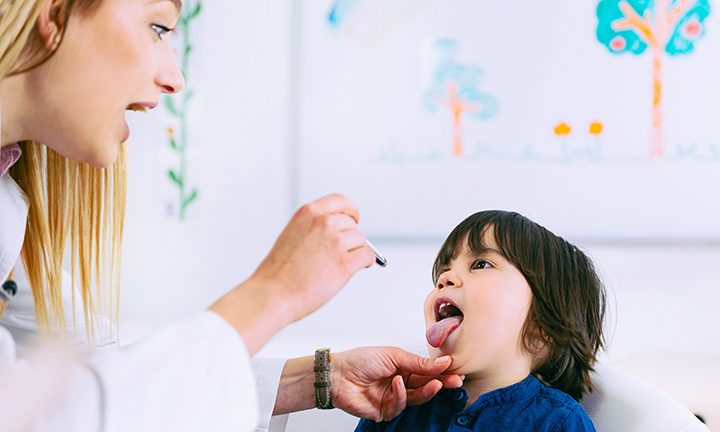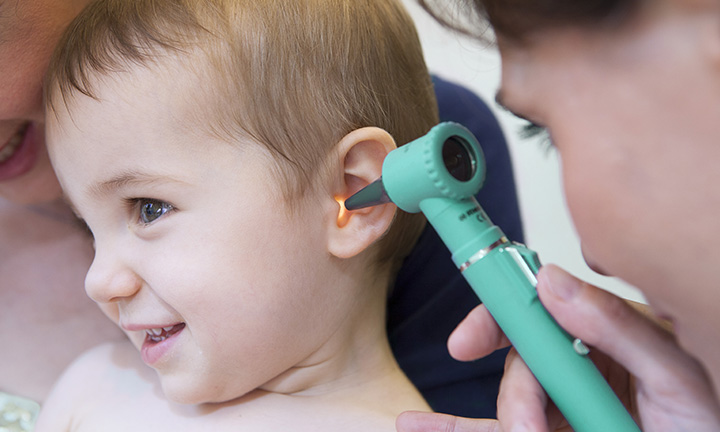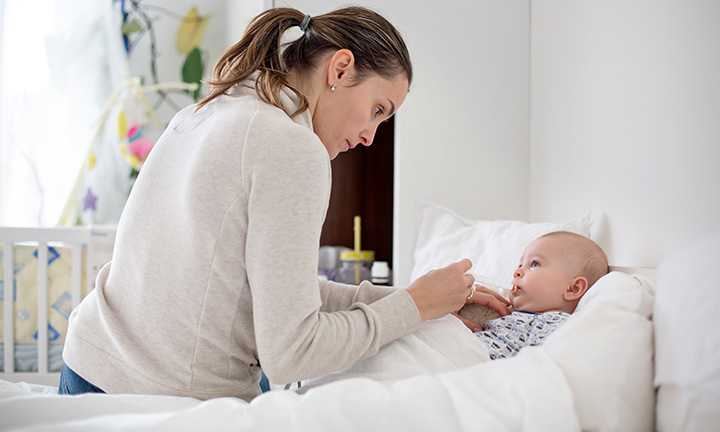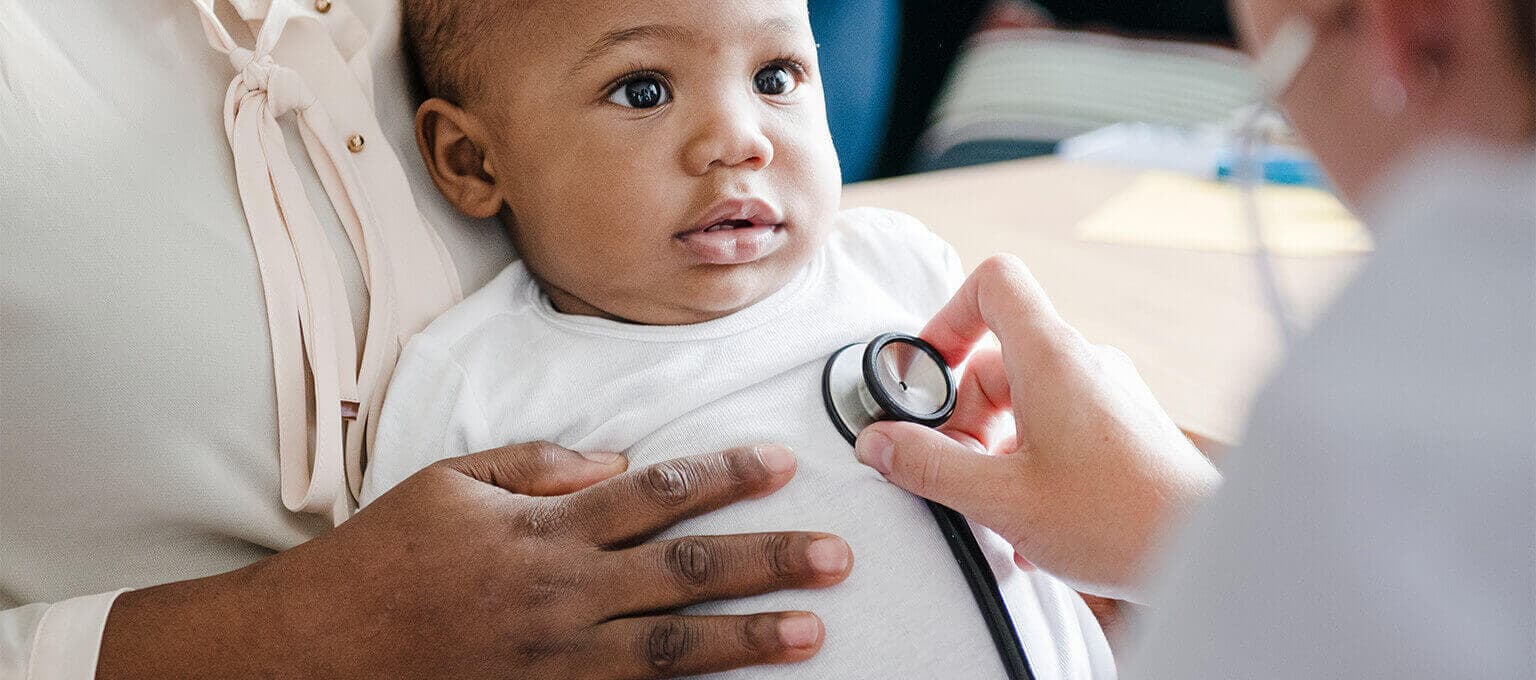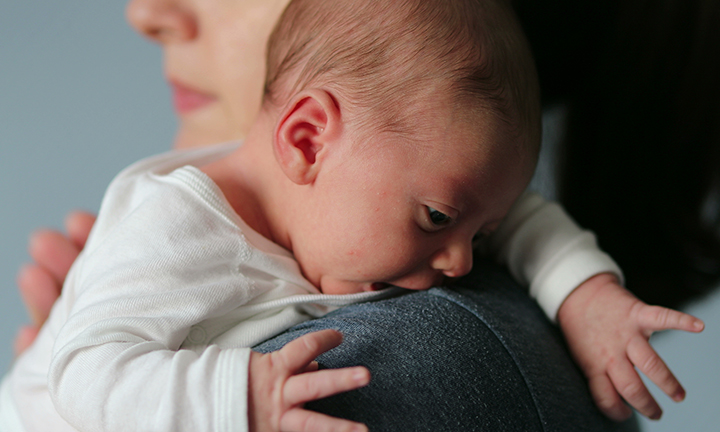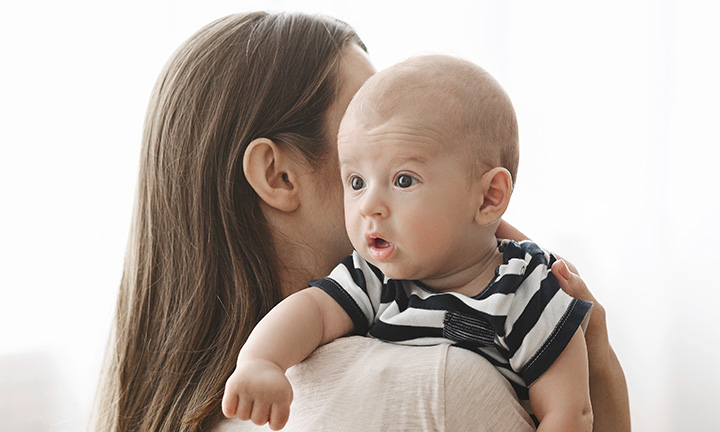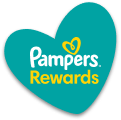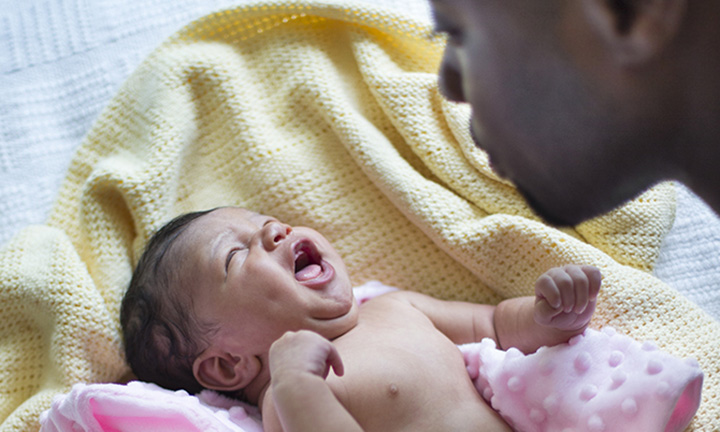
Oral Thrush in Babies—Why Does It Happen?


If you’re wondering, “Why is my baby’s tongue white?” and your little one also seems cranky or uncomfortable when feeding, they may have oral thrush. White patches on the tongue, or anywhere else in the mouth or throat, could signal this common fungal infection.
But what exactly is oral thrush? Read on to learn more about thrush in babies, what might cause it, how to spot the symptoms, how to treat or prevent this kind of infection, and how oral thrush might affect you if you’re breastfeeding.
What Is Thrush in Babies?
Thrush is a fungal infection of the mouth, also known as oral candidiasis, that can affect anyone at any age, but it’s especially common in newborns and infants under 6 months.
The fungus that causes thrush is a kind of yeast called candida that can live anywhere on the body, including the mouth, the digestive tract, and the diaper area.
When the fungus overgrows in your baby’s mouth, it can develop into oral thrush, which can cause sore patches in or around your little one’s mouth. These may be uncomfortable or painful, especially when feeding.
Signs and Symptoms of Oral Thrush in Babies
If you suspect your baby has oral thrush, it’s important to see your healthcare provider to get a diagnosis and treatment. So, what does thrush look like in babies? Here are some signs and symptoms to look out for:
Difficulties with feeding. One of the first signs you notice could be that your baby isn’t feeding as well as usual, or they seem to be finding it uncomfortable or painful.
White patches. These spots may look a little like cottage cheese and can appear on your baby’s tongue, lips, gums, or the roof of their mouth. Try wiping them gently away—if they can’t be removed in this way, your little one might have oral thrush. Because these patches aren’t always obvious from the outside, it’s a good idea to check in your little one’s mouth from time to time.
Cracked skin at the corners of the mouth. This is another possible symptom of oral thrush in babies.
Diaper rash. As the fungus is swallowed and passed out of your little one’s system, it can worsen diaper rash around your baby’s bottom.
Telltale signs on your own body. If you’re breastfeeding and have itchy, cracked, or sore nipples, or intense shooting pains in the nipples or breasts, these symptoms could indicate that you have thrush. Thrush can be passed between your nipples and your baby’s mouth during breastfeeding. We cover how thrush can affect breastfeeding later on in this article.
Here's a picture of oral thrush in babies for a better idea of what it may look like:
Is Thrush Painful for Babies?
If you’re wondering, “Does thrush hurt babies?” the answer can vary from infant to infant. Some babies may experience discomfort or soreness in the mouth, particularly during feeding, while others might not feel any discomfort at all.
If your baby has oral thrush and they seem irritable or have trouble feeding, this may be due to soreness in their mouth.
What Causes Oral Thrush in Babies?
How do babies get thrush? Most of the time, the presence of candida isn’t a problem, as it’s kept in check by your baby’s immune system and “good bacteria.” But if your baby is still quite young, especially before 6 months of age, their immune system isn’t fully developed yet. This immature immune system can result in an overgrowth of candida, causing oral thrush in your baby. Here are several other factors that may contribute to oral thrush in babies:
Transmission during birth. Newborns can acquire this infection during vaginal delivery, especially if the birthing parent has a vaginal yeast infection.
Antibiotic use. Antibiotics prescribed to infants or breastfeeding parents can disrupt the balance of normal bacteria. This means your baby’s natural defenses against the candida are down, and the fungus can grow out of hand.
Weakened immune system. Infants with compromised immune systems, such as those with certain health conditions or treatments, are more susceptible to infections like thrush.
Recognizing these factors can help in preventing and managing oral thrush in infants.
How to Treat Oral Thrush in Your Baby
If you notice any possible symptoms of thrush in your baby or yourself, consult your healthcare provider to get a diagnosis. Your provider can explain your treatment options.
Thrush occasionally goes away by itself in a few weeks, but your healthcare provider may prescribe an antifungal treatment.
If you’re breastfeeding your baby, your healthcare provider might also prescribe an antifungal cream for your breasts.
Various over-the-counter medicines are available for oral thrush in infants but always check with your provider before using any of these.
Home Remedies for Thrush in Infants
Some people believe that home remedies like rinsing nipples in a solution of vinegar and water or baking soda and water solution can help, as can cutting down on the amount of sugar, yeast, and dairy products in your diet.
These measures aren’t medically proven to work and should only be used alongside any medication that’s prescribed by your healthcare provider, and not as a substitute for it. Always check with your provider before using any home remedies or over-the-counter medicines.
In some cases, and depending on your baby’s age, your healthcare provider might recommend adding yogurt containing lactobacilli (“good bacteria”) to your baby’s diet. This may help clear up yeast infections.
If the thrush doesn’t clear up in a few weeks with treatment, or if it keeps coming back—especially if your little one is over 9 months old—contact your healthcare provider to investigate whether any other health issues are at play.
How to Prevent Oral Thrush in Babies and Newborns
These are some of the steps you can take to help prevent your little one from developing oral thrush:
Wash your baby’s hands frequently, especially if your little one sucks their thumb or fingers. Wash your own hands often, too.
Regularly sterilize pacifiers, teething rings, the nipples of feeding bottles, and anything else that goes in your baby’s mouth.
Put any towels or clothing that may have been in contact with the yeast through a hot wash cycle (at least 122 degrees Fahrenheit).
If you use a breast pump, make sure all the parts that come into contact with your breasts or breast milk are sterilized after every use.
Store breast milk refrigerated until just before use to prevent the growth of yeast.
You may need to throw away any expressed breast milk that you have in storage if there’s a chance that it’s been contaminated with the yeast.
Keep your breasts dry and free of potential sources of yeast by changing any disposable nursing pads frequently and wearing a clean bra every day.
How Thrush Can Affect You if You’re Breastfeeding
If you're breastfeeding your baby, thrush can be a real pain—often literally—for you, as well as for your baby.
It’s important to get prompt treatment, so contact your healthcare provider for diagnosis and treatment as soon as you can. Keep in mind that the symptoms may not clear up straight away.
In the meantime, experts advise that you keep on breastfeeding. Here are some ways you might be able to ease the discomfort and keep that breast milk flowing:
Try offering shorter, but more frequent feeds. Start with the least painful breast every time.
Rinse your nipples with clean water after every feed and air-dry them before they go back in your bra.
If cracked nipples are making it too painful to breastfeed directly, consider expressing milk.
An over-the-counter pain medication might help ease the pain a little. Ask your healthcare provider what’s safe to take while you’re breastfeeding.
Why It Might Not Be Thrush
Not all breast pain or nipple soreness is caused by thrush. If you experience sharp pains in your breast during or after feeds, and severe pains in the nipple, try changing your baby's breastfeeding position or getting them to latch on again. This might be all that’s needed to help alleviate the pain you’re feeling.
If cold compresses or air-drying make your nipple or breast pain worse, the pain could be caused by a contraction of the blood vessels in and around your nipples.
Another cause of breast pain can be a bacterial infection called mastitis.
These conditions are commonly confused with thrush, so reach out to your healthcare provider, who will be able to find the underlying cause of your discomfort.
FAQS AT A GLANCE
Oral thrush can give some babies a sore mouth and make it painful or uncomfortable to feed, but many babies don’t feel anything.
The Bottom Line
Having a new baby can be unpredictable at times. One moment you’re enjoying that first toothless smile, and the next you’re trying to wipe away a white patch from the inside of your little one’s mouth.
Oral thrush in babies can be a challenge that parents occasionally face. However, with treatment from your healthcare provider, it can be resolved over time. Soon enough, you and your baby will be able to enjoy peaceful bonding during nursing again.
In the meantime, take some time out to give yourself or your baby a little treat by turning your diapers into rewards. Download the Pampers Rewards app to find out how.
- American Academy of Pediatrics. Caring for Your Baby and Young Child: Birth to Age 5, 7th ed. (New York: Bantam Books, 2019).
- Cleveland Clinic. Thrush
- Healthy Children. Thrush and Other Candida Infections
- Healthy Children. Tips for Treating Viruses, Fungi, and Parasites
- Kids Health. Oral Thrush
- La Leche League. Is Thrush Causing My Sore Nipples?
- Mayo Clinic. Leukoplakia
- Mayo Clinic. Oral Thrush
- Womens Health. Common Breastfeeding Challenges
Read more about Baby
Related Articles
Join a World of Support
through Pregnancy and Parenthood.
TRACK WITH TOOLS
LEARN WITH EXPERTS
GET REWARDED


